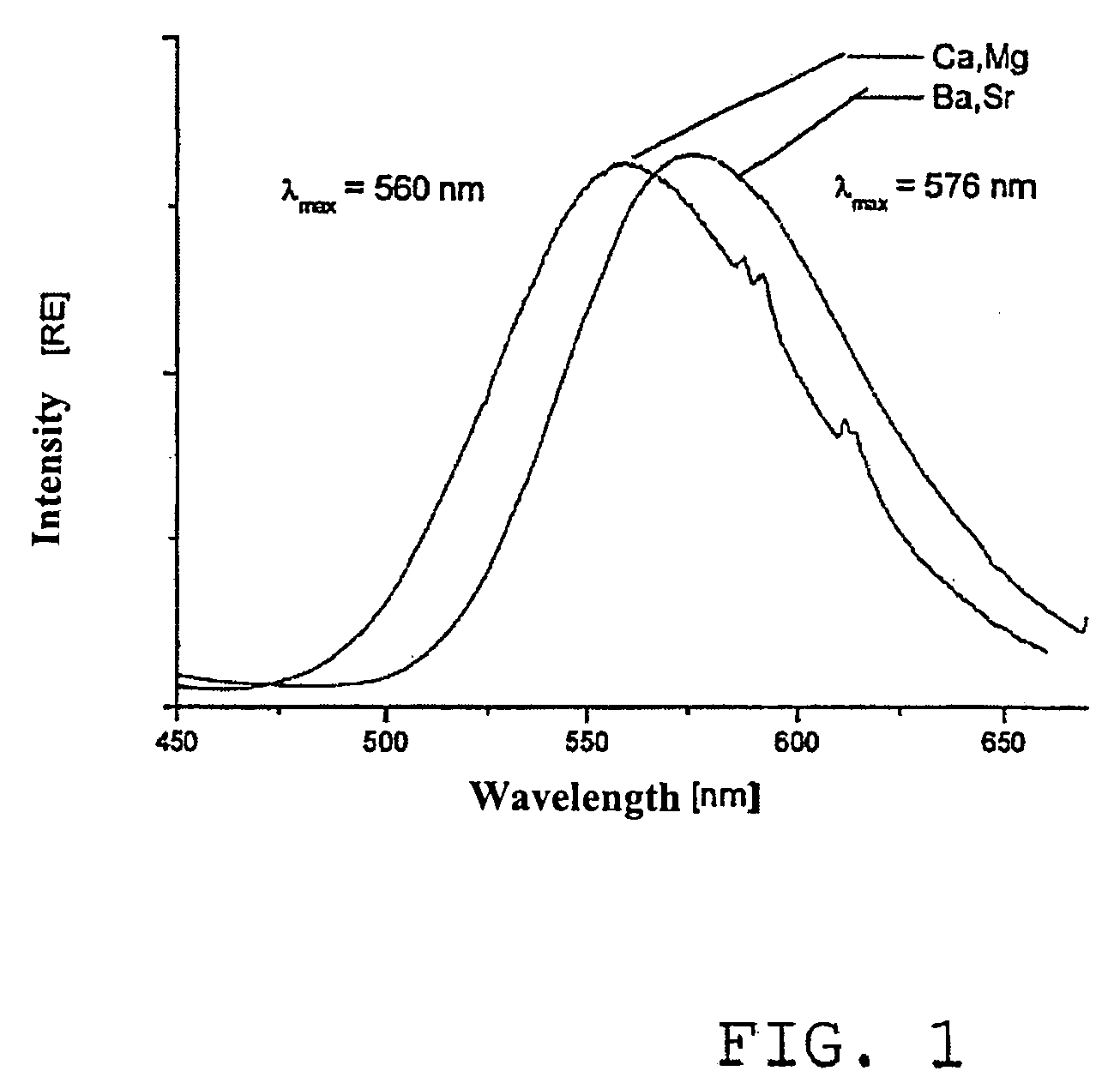Method for producing alkaline earth sulphate nanoparticles
a technology of alkaline earth sulphate and nanoparticles, which is applied in the field of nanoparticle synthesis, can solve the problems of particle agglomeration, particle agglomeration, and inability to produce particles having a lower average particle diameter, and achieve the effect of slowing down crystal growth
- Summary
- Abstract
- Description
- Claims
- Application Information
AI Technical Summary
Benefits of technology
Problems solved by technology
Method used
Image
Examples
embodiment examples
[0038]1.
[0039]55 g of BaCl2 are weighed out into a round-bottomed flask and are dissolved in 300 ml of glycerin. 30 g of imidazole dissolved in glycerin are then added to the Ba-containing solution and the reaction mixture is subsequently dried by gentle heating for 24 hours. In parallel, 73 g of tetrabutylammonium hydrogen sulphate are dissolved in glycerin and are dried over night. Both solutions are then mixed together at 70° C. and stirred for one hour. Following the addition of 0.5 equivalents of water based on glycerin, the thus synthesised barium sulphate particles are washed with isopropanol precipitated with ethanol and are subsequently dried. Approximately 60 g of barium sulphate nanoparticles having a homogeneous size distribution of 22% around an average particle size of 19 nm are produced.
[0040]2.
[0041]A small amount of 1 g of BaCl2 and 0.15 g of MnCl2 is dissolved in ethylene glycol and is dried overnight at 50° C. 0.07 g of EuCl3, 0.54 g of imidazole and 1.32 g of tet...
PUM
| Property | Measurement | Unit |
|---|---|---|
| particle size | aaaaa | aaaaa |
| particle size | aaaaa | aaaaa |
| sizes | aaaaa | aaaaa |
Abstract
Description
Claims
Application Information
 Login to View More
Login to View More - R&D
- Intellectual Property
- Life Sciences
- Materials
- Tech Scout
- Unparalleled Data Quality
- Higher Quality Content
- 60% Fewer Hallucinations
Browse by: Latest US Patents, China's latest patents, Technical Efficacy Thesaurus, Application Domain, Technology Topic, Popular Technical Reports.
© 2025 PatSnap. All rights reserved.Legal|Privacy policy|Modern Slavery Act Transparency Statement|Sitemap|About US| Contact US: help@patsnap.com

